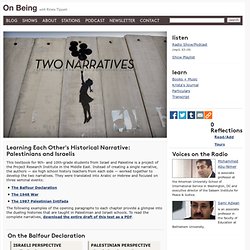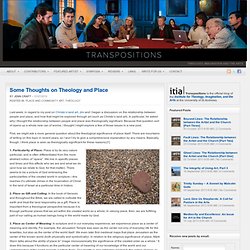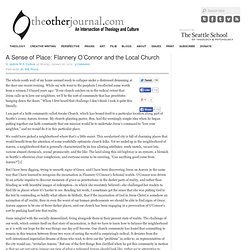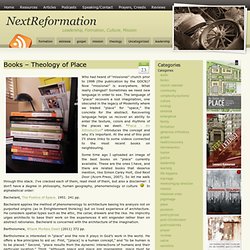

The Gift Outright by Robert Frost. Thin Places, Thick Realities. Restoring the Senses: Gardening and Orthodox Easter. Learning Each Other's Historical Narrative: Palestinians and Israelis. Israeli Perspective The War of Independence The violent confrontations between Jews and Arabs in the land of Israel started in the early 1920s.

For the most part, the Jews defended themselves against attacks by the Arabs. The Hagana was responsible for defense of the Jewish community, and sometimes British armed forces intervened to end the violence. The Hagana was established in 1920 primarily as a regional organization; in each settlement its members were responsible for its own defense. In 1936 there was an Arab uprising which called for liberation from British rule. The Poetry of Creatures. WHAT CAN WE BELIEVE WHERE? Robert Adams [Vol4, #4] “What does our Geography Compel us to Believe?”
![WHAT CAN WE BELIEVE WHERE? Robert Adams [Vol4, #4]](http://cdn.pearltrees.com/s/pic/th/featured-believe-where-robert-51322662)
A review ofWhat Can We Believe Where? :Photographs of the American West. By Robert Adams. Reviewed by Brent Aldrich. What Can We Believe Where? [ Editor's Note: One of the very first reviews we ran on this site was Brent's review of Robert Adams' book Why People Photograph. A new collection of Robert Adams’ more than 40 years of photographs asks in the title “What Can We Believe Where?” Before diving into the photographs, then, it seems prescient to seriously consider the ramifications of this formulation of belief. One of these practices, of course, is making photographs, and in this regard Adams makes good, for these prints do what his words suggest, drawing on particular geographies to discern what people believe about them (both what we might be compelled to believe, but also what these views allow), even as the photographs themselves frame the place anew, suggesting further possibilities of a given place.
Some Thoughts on Theology and Place. Last week, in regard to my post on Christo’s land art, Jim and I began a discussion on the relationship between people and place, and how that might be explored through art (such as Christo’s land art).

In particular, he asked why I thought the relationship between people and place was theologically significant. Because that question sort of opens up a whole new can of worms, I thought I might explore a few of those issues in a new post. First, we might ask a more general question about the theological significance of place itself. There are mountains of writing on this topic in recent years, so I won’t try to give a comprehensive explanation by any means. Basically, though, I think place is seen as theologically significant for these reasons:[1] 1. 2. 3. Connected to these points, and bringing us to the specific topic of the relationship of people and place, is the fact that place is relational, to use John Inge’s term from his Christian Theology of Place. Photo: taken by author. Agrarian News… A Theology of Place. A Sense of Place: Flannery O’Connor and the Local Church : The Other Journal. The whole south wall of my home seemed ready to collapse under a distressed drumming at the door one recent evening.

While my wife went to the peephole I recollected some words from a sermon I’d heard years ago: “If our church catches on to the radical extent that Jesus calls us to love our neighbors, we’ll be the sort of community that has prostitutes banging down the doors.” When I first heard that challenge I don’t think I took it quite this literally. I am part of a faith community called Awake Church, which has bound itself to a particular location along part of Seattle’s iconic Aurora Avenue. My church-planting pastor, Ben, had the seemingly simple idea when he began putting together our faith community that our mission would be to undertake Jesus’s command to “love your neighbor,” and we would do it in this particular place. We could have picked a neighborhood where that’s a little easier. This is what I mean by comparing our work to O’Connor’s storytelling. Books – Theology of Place. Who had heard of “missional” church prior to 1998 (the publication by the GOCN)?

Now “missional” is everywhere. What really changed? Sometimes we need new language in order to see. Books – theology of place. I have been meaning to upload an image of the best books on “place” currently available. These are the ones I have, and there are related books that deserve mention, like Simon Carey Holt, (Acorn Press, 2007). So let me walk through this stack. I’ve cracked each of them, but read completely only four. Disclaimer: I don’t have a degree in philosophy or phenomenology or culture In alphabetical order: Bachelard, The Poetics of Space. 1951. 241 pp. Bachelard applies the method of phenomenology to architecture basing his analysis not on purported origins (as in Enlightenment thinking) but on lived experience of architecture. Bartholomew, Where Mortals Dwell (2011) 372 pp. Bartholomew is interested in “place” and the role it plays in God’s work in the world. The book is divided into three sections.
Toward a Theology of Place « In the Currach.